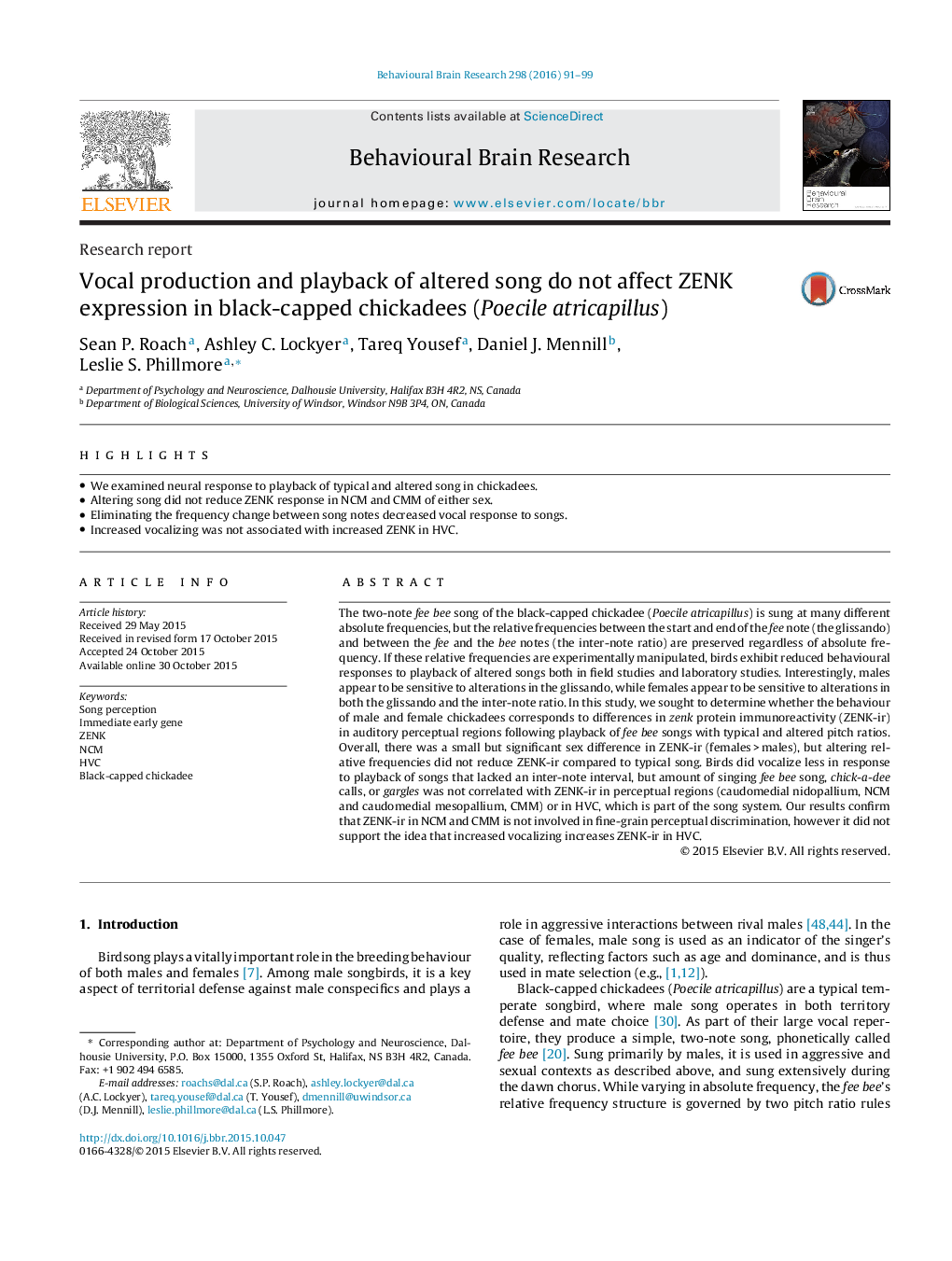| کد مقاله | کد نشریه | سال انتشار | مقاله انگلیسی | نسخه تمام متن |
|---|---|---|---|---|
| 6256267 | 1289914 | 2016 | 9 صفحه PDF | دانلود رایگان |

- We examined neural response to playback of typical and altered song in chickadees.
- Altering song did not reduce ZENK response in NCM and CMM of either sex.
- Eliminating the frequency change between song notes decreased vocal response to songs.
- Increased vocalizing was not associated with increased ZENK in HVC.
The two-note fee bee song of the black-capped chickadee (Poecile atricapillus) is sung at many different absolute frequencies, but the relative frequencies between the start and end of the fee note (the glissando) and between the fee and the bee notes (the inter-note ratio) are preserved regardless of absolute frequency. If these relative frequencies are experimentally manipulated, birds exhibit reduced behavioural responses to playback of altered songs both in field studies and laboratory studies. Interestingly, males appear to be sensitive to alterations in the glissando, while females appear to be sensitive to alterations in both the glissando and the inter-note ratio. In this study, we sought to determine whether the behaviour of male and female chickadees corresponds to differences in zenk protein immunoreactivity (ZENK-ir) in auditory perceptual regions following playback of fee bee songs with typical and altered pitch ratios. Overall, there was a small but significant sex difference in ZENK-ir (females > males), but altering relative frequencies did not reduce ZENK-ir compared to typical song. Birds did vocalize less in response to playback of songs that lacked an inter-note interval, but amount of singing fee bee song, chick-a-dee calls, or gargles was not correlated with ZENK-ir in perceptual regions (caudomedial nidopallium, NCM and caudomedial mesopallium, CMM) or in HVC, which is part of the song system. Our results confirm that ZENK-ir in NCM and CMM is not involved in fine-grain perceptual discrimination, however it did not support the idea that increased vocalizing increases ZENK-ir in HVC.
Journal: Behavioural Brain Research - Volume 298, Part B, 1 February 2016, Pages 91-99